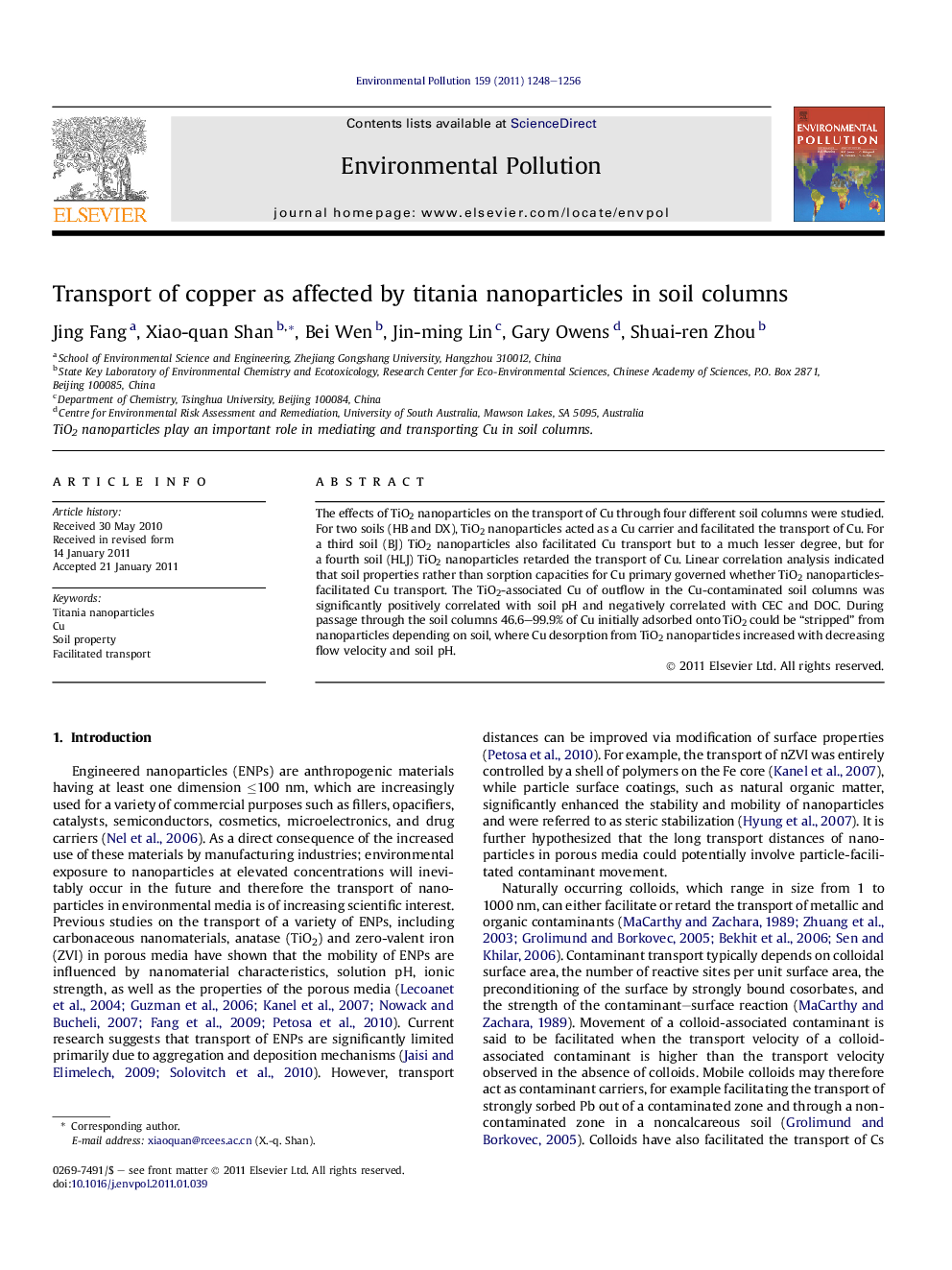| Article ID | Journal | Published Year | Pages | File Type |
|---|---|---|---|---|
| 4425456 | Environmental Pollution | 2011 | 9 Pages |
The effects of TiO2 nanoparticles on the transport of Cu through four different soil columns were studied. For two soils (HB and DX), TiO2 nanoparticles acted as a Cu carrier and facilitated the transport of Cu. For a third soil (BJ) TiO2 nanoparticles also facilitated Cu transport but to a much lesser degree, but for a fourth soil (HLJ) TiO2 nanoparticles retarded the transport of Cu. Linear correlation analysis indicated that soil properties rather than sorption capacities for Cu primary governed whether TiO2 nanoparticles-facilitated Cu transport. The TiO2-associated Cu of outflow in the Cu-contaminated soil columns was significantly positively correlated with soil pH and negatively correlated with CEC and DOC. During passage through the soil columns 46.6–99.9% of Cu initially adsorbed onto TiO2 could be “stripped” from nanoparticles depending on soil, where Cu desorption from TiO2 nanoparticles increased with decreasing flow velocity and soil pH.
► TiO2 nanoparticles could facilitate or retard the transport of Cu in soils. ► Soil properties primarily governed TiO2-facilitated Cu transport. ► Cu initially adsorbed onto TiO2 could be “stripped” duing transport.
